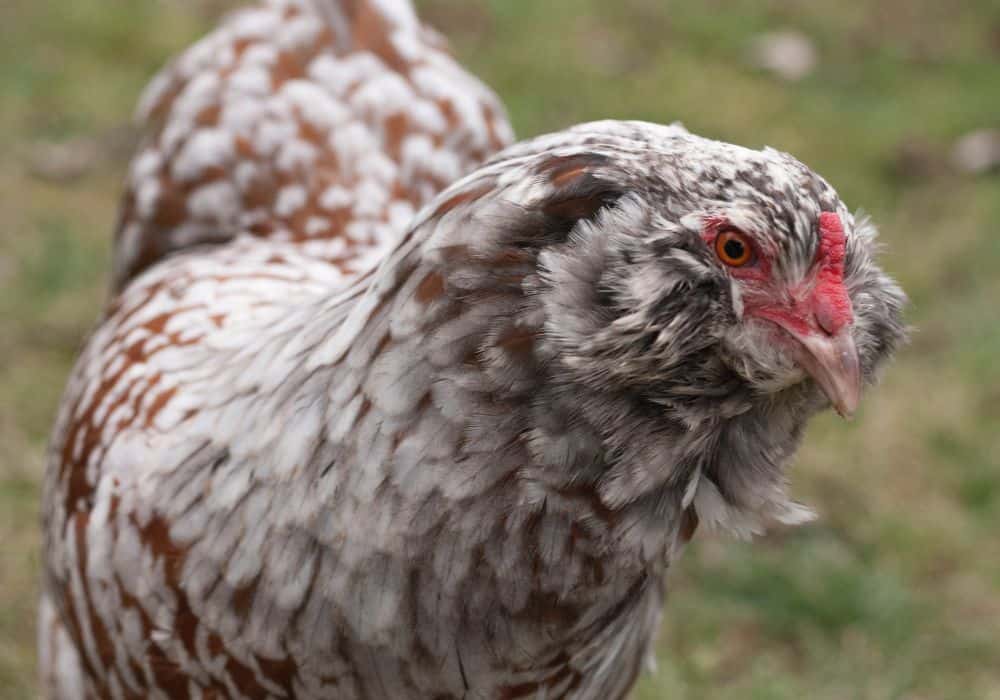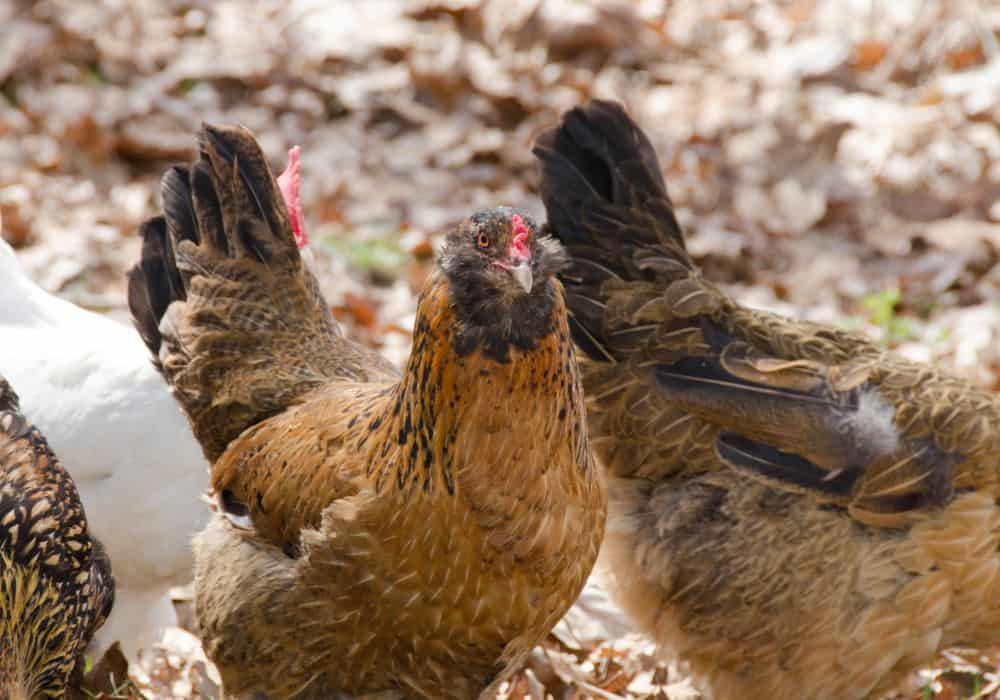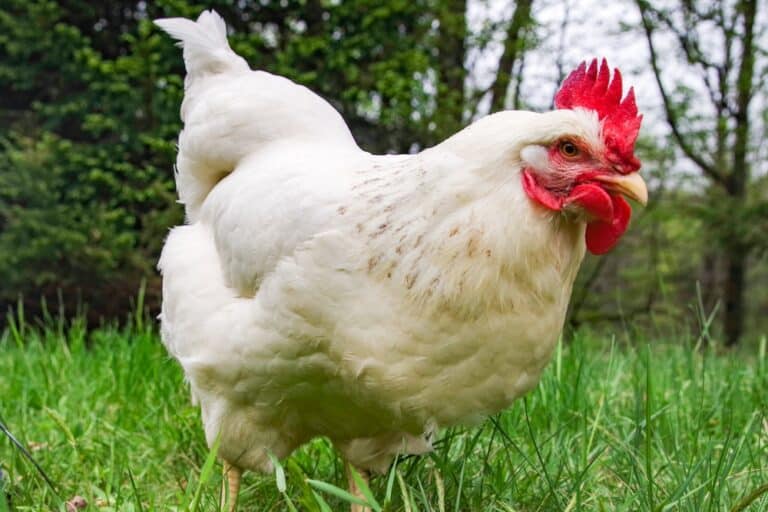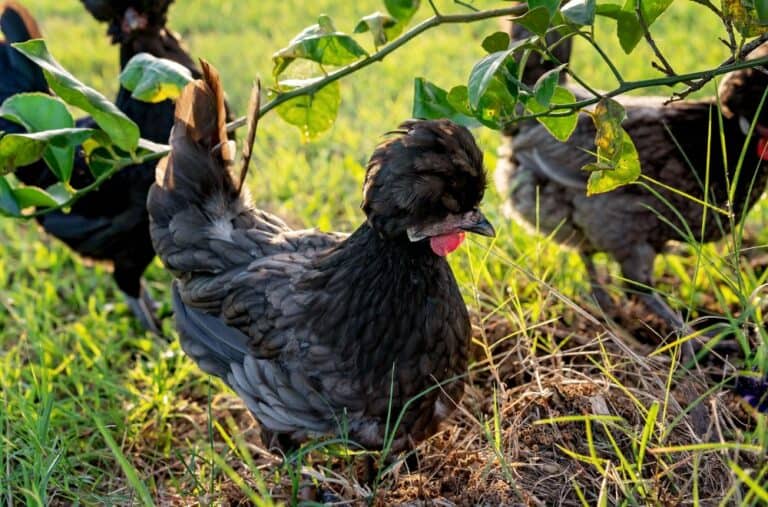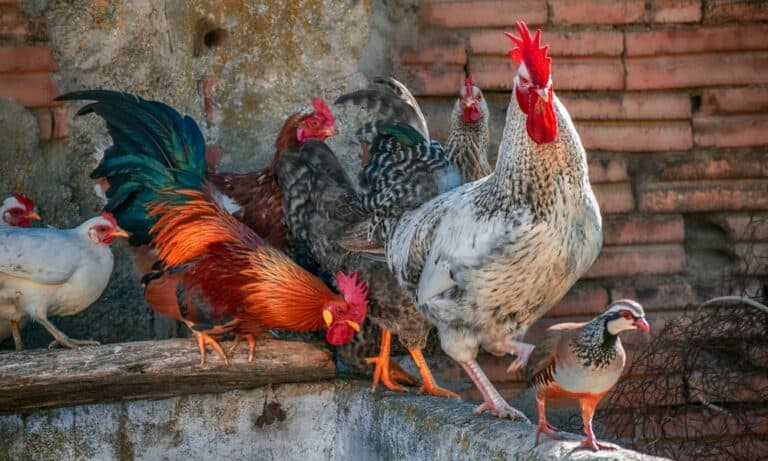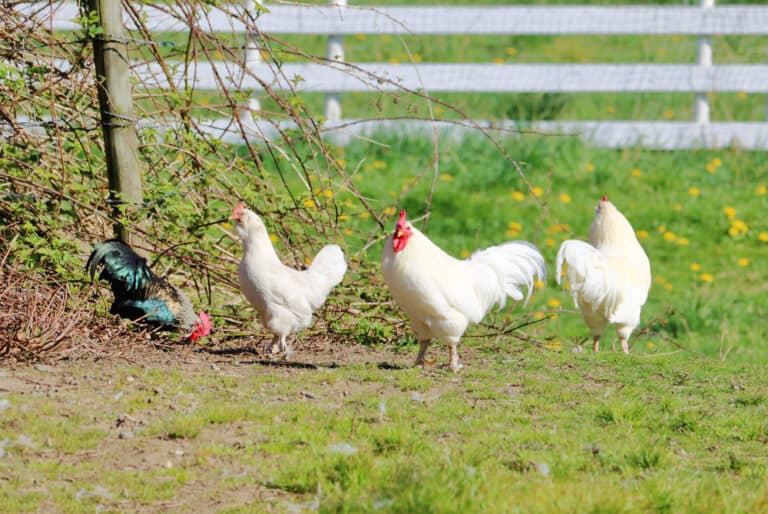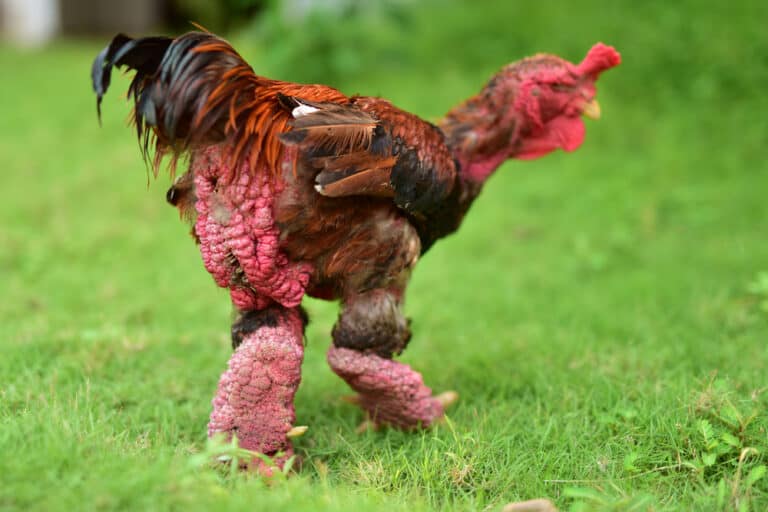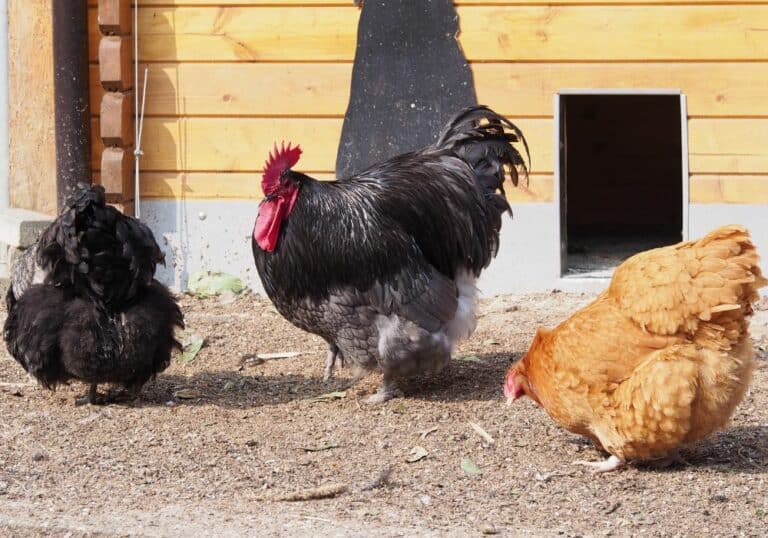The Ameraucana chickens are on top of many lists of the most popular breeds of chicken. This is not surprising since they are a breed that suits beginners and more experienced chicken growers alike. They have gentle personalities and are known for laying light blue eggs.
If you are considering getting Ameraucana chickens or just would like to learn more about this interesting breed, you are in the right place. In this article, you will find information about their appearance, personality, how the breed was developed, as well as how to look after them.
How Were Ameraucana Chickens Bred?
The Ameraucanas are a breed that was developed in America by breeding Araucana chickens with various other breeds, hence the name. ”Amer” for their American origin combined with the original name.
The Araucanas originated from Chile, in South America where they were created by crossing the ancient breeds of Quintero and Collonca. Unfortunately, the Araucanas were discovered to have a lethal gene related to their ear tufts that could cause the chicks to die before they hatched.
When Araucanas were imported to the United States in the 1920s, some people set to work to improve the breed and eliminate the deadly tufting gene. However, it wasn’t until the end of the 1970s that the name Ameraucana was officially used.
Since then, the American Poultry Association has recognized Ameraucana as a separate species from the Araucana. Despite this, some countries, the UK and Australia included, still consider the two types to be the same breed.
Characteristics of the Ameraucana
The Ameraucanas have compact bodies and wide chests. They have upright tails and small, red pea combs. The short pea comb is close to the head and has three bumps that resemble peas, giving the comb its name.
Both males and females have small wattles, which are red like their pea combs. The color of their legs depends on what color their feathers are. All Ameraucanas have four toes on each foot and they have bay red eyes that can make them look fierce. People often think they look a bit like hawks with their reddish-brown eyes and body shape.
Ameraucanas Weight
A standard Ameraucana hen weighs about 5.5lb (2.5kg) and a rooster about 6.5lb (3kg). The other Ameraucana variety, the bantam Ameraucana, is a tiny bird with hens weighing about 24oz (700g) and roosters 30oz (800g).
Feathers and Colors
Ameraucanas have distinctive fluffy feathers around their face and they are one of few breeds that have both muffs and beards. The feathers around the upper throat are known as the beard and the muffs are formed of the feathers projecting away from its face.
The Ameraucanas are bred in several colors. The American Poultry Association recognizes the following colors: black, blue, blue wheaten, brown red, buff, silver, wheaten, and white. However, there are other colors, too, since breeders are still crossbreeding the Ameraucanas.
Ameraucanas Are Often Confused With Easter Eggers
Because the Ameraucanas are genetically similar to the Easter Eggers, people often confuse the two separate breeds. Easter Eggers also have muffs and beards and their egg color can also be blue. However, while Ameraucanas are recognized as pure breeds, the Easter Eggers are not.
Easter Eggers are hybrids that are made by crossbreeding either Ameraucanas or Araucanas with other breeds such as the Silver Spangled Hamburg or Rhode Island Red.
If you are looking to buy Ameraucanas, you should know that some hatcheries sell Easter Egg chickens as Ameraucanas. Look out for the spelling Americauna or Americana. Using the slightly changed spelling has been a marketing ploy that some breeders have used for several years.
Other warning signs, include the price or the inclusion of ”not for exhibition use”. If the birds are sold for $5 to $10, it is not likely a pure-bred Ameraucanal, which costs about $20 for hens and $18 for roosters. They are not exhibition chickens because they would not qualify since they are hybrids.
You can watch this video to find out more about the difference between Ameraucanas and Easter Eggers.
Personality
The Ameraucana breed is known to be fairly independent and although they can handle living in confinement, they prefer to free range. They are smart, friendly, and inquisitive birds that are better than some other breeds at keeping an eye out for predators.
They are not a flighty or nervous breed, which makes them suitable for beginners and families. However, they can get a bit skittish if they are not regularly handled from a young age. While they enjoy interaction with humans, owners should remember Ameraucanas do not like being cuddled.
In the flock, they are docile and will avoid trouble as much as they can. This applies to most Ameraucana roosters, too. They are generally less aggressive than roosters from many other breeds, but there are exceptions and you should always exercise caution if they are near small children.
Are Ameraucanas Noisy?
If you are looking to keep backyard chickens in an urban neighborhood, you need to consider the noise level of the chickens. While all hens can be expected to make some noise, Ameraucanas are one of the quieter breeds. Even the roosters make less noise. Typical sounds for Ameraucanas are chirps, whistles, and growls when they are upset.
Ameraucana’s Egg Production
Ameraucanas are moderate but reliable egg producers and usually lay 150-200 eggs per year. That averages between three and four eggs per week. Americaunas produce eggs throughout the year. However, their egg-laying slows down during winter months and when they are molting.
If you have recently got Ameraucanas and are worried because they haven’t produced any eggs yet, you should know that this is normal. Sometimes it will take several months while they get used to their surroundings and before they start laying eggs. But once they do, they are reliable.
Looking After Ameraucanas
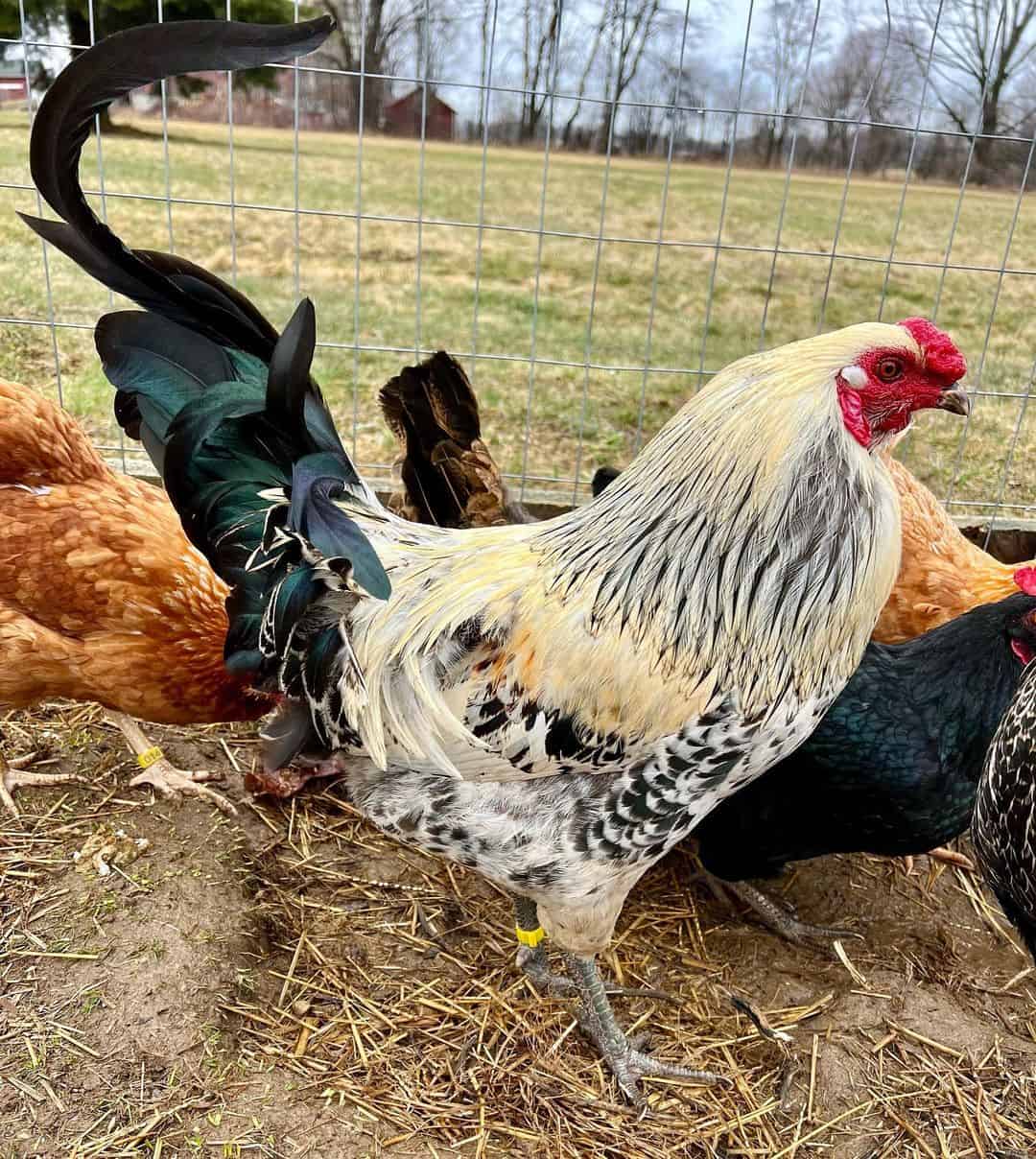
defiant.homestead
One of the reasons for Ameraucana’s popularity in backyard chicken coops is that they are hardy birds that are easy to look after and keep happy. They handle cold temperatures well but are not best suited for humid and hot climates.
During hot summer days, you need to provide the Ameraucanas with plenty of cool spots in the shade and ensure they have constant access to water. A trick used by many Ameraucana keepers is to put a bottle of frozen water inside their coop to help cool down the area.
Day-to-Day Care
Ameraucana chickens are a healthy breed and there a no known major health issues. Their life expectancy is around eight years. You need to ensure your Ameraucanas have fresh water and food every day. However, they like to forage for their own food to supplement their diet with what they can find in the garden.
Because they are not keen on being confined all day long, you should let them out of the coop every day. In the evening, lock them back in to prevent predators from getting to your flock.
The floor of the coop should be lined up with disposable bedding made of absorbent material, for example, shredded paper or wood shavings. Clean it out regularly. You will notice the smell when it needs cleaning. However, you should do it at least once a week to keep your chickens healthy.
Ameraucana Coop
As mentioned above, Ameraucanas do not mind confinement but they are happier when they have free range. It will also keep them healthier. But even free-roaming chickens need a chicken coop, which provides them safety from predators and a place where to lay their eggs.
When setting up a coop, you need four square feet per chicken to keep them happy. If they are out all day, it is possible to get away with less but you might notice more aggression between your chickens. In addition, a too-small coop can reduce egg production and increase the chances of your chickens getting sick.
Keeping Ameraucanas in a Chicken Run
If you do not have the option to let your Ameraucanas roam free, you need to ensure they have enough space, with many perches as well as other things to amuse them. Remember, they are intelligent and curious birds and like stimulating surroundings.
If your Ameraucanas are kept in an enclosure, you need to have a least eight square meters per chicken. Add perches at different heights and things, such as boxes or branches, they can stand on and hide in to increase the available space.
Nesting Boxes for Ameraucanas
Nesting boxes are where your chicken will lay their eggs. They will be drawn to lay their eggs in these boxes because they will feel protected inside the enclosed walls. Using nesting boxes is also beneficial for the owners as they can find the eggs easier rather than risk walking on them.
For Ameraucanas, you can get 12 x 12-inch boxes, which is the standard size. You can buy boxes ready-made or make them yourself. Nesting boxes that are mounted to the side of the coop with an opening on the outside are popular because they allow you to collect the eggs without entering the coop.
If you notice that your hens are not using their boxes to lay eggs in, try putting plastic eggs or golf balls in the nest. This can help them realize the boxes are for egg laying. And if they still don’t, at least their beautiful blue eggs are easier to spot on the ground than brown eggs.
Ameraucana Breeding
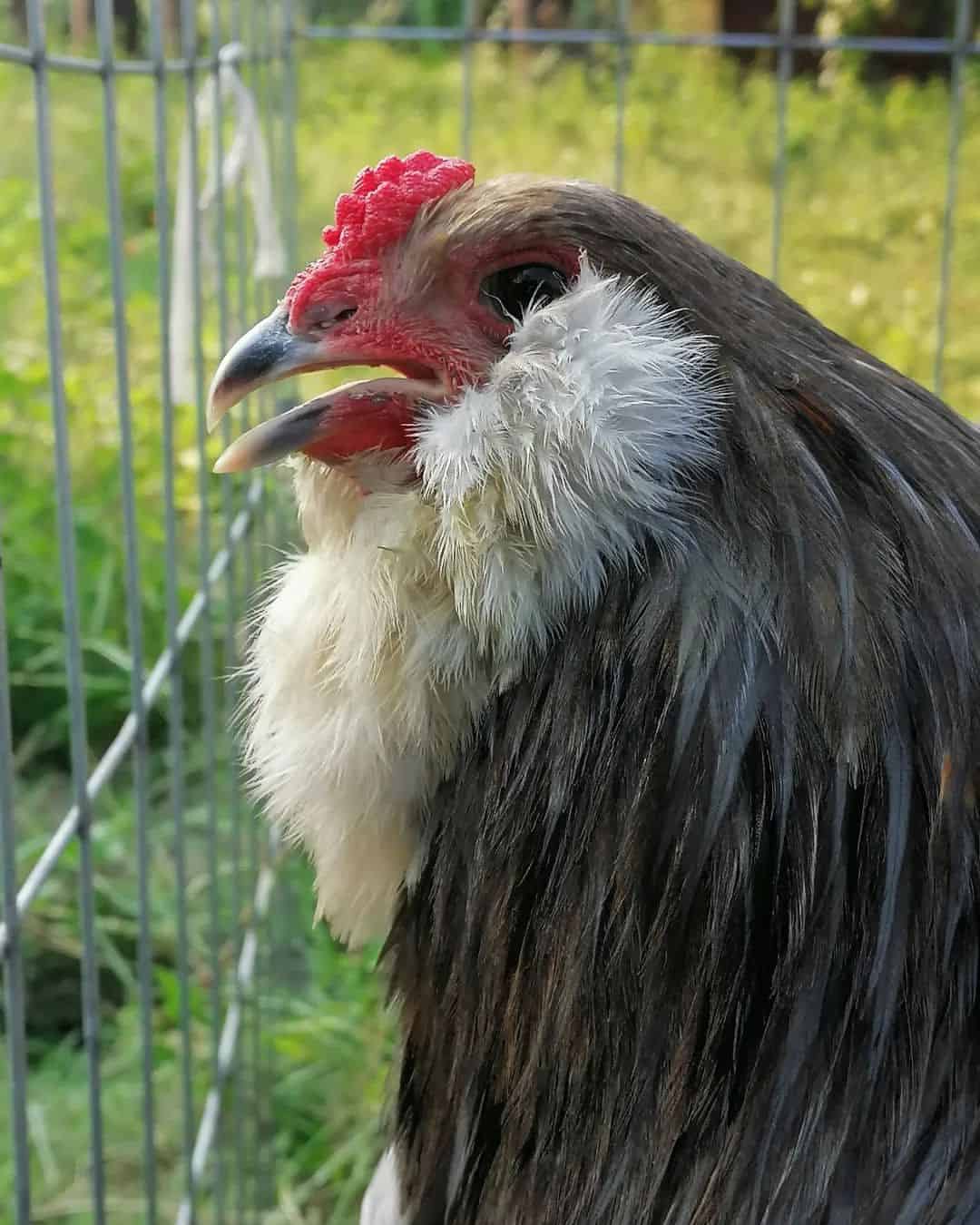
Compared to many other breeds, the Ameraucanas are not a broody breed. If you are looking to grow chicks from fertile eggs laid by your chickens, then the Ameraucanas may not be the ideal breed for you. However, it does vary from one hen to the next.
You can identify broodiness in a hen from the way she will just sit in one spot for an extended period. She will also stop producing eggs and will become very defensive when she is approached by anyone.
Ameraucana Chicks
Telling Ameraucana hens and roosters apart can be challenging until they reach a mature age. While some experts can identify the sex of a baby chick when they are just a day old, they can make mistakes. If you are looking to own hens only, it is best to wait until the chickens are older to avoid accidentally getting a rooster.
If you are trying to separate the hens from the roosters at an early age, focus on their comb. The base of a male chick’s comb will be wider than a female’s comb. From three months old the male Ameraucanas lose the feathers on their necks. They may also develop a bossier temperament and begin to try to crow.
A Hen or A Rooster
Telling adult Ameraucanas apart is easier because their adult feathers have grown. The rooster will have more pronounced hackle feathers. They are also pointier and longer than the hens, which remain more rounded and shorter.
Adult hens are friendlier and generally easier to handle than roosters. Even though they are a docile breed, Ameraucana roosters can still become aggressive and therefore more difficult to handle. If they are socialized with humans from young chicks, they will be easier to handle as adults.
The main time Ameraucana roosters show aggression is when it is the breeding season. During this season, they grow very protective of the hens. As a result, they may try to attack if they see anyone getting too close to the hens.
Conclusion
Ameraucanas are a popular though still rare breed with many desirable traits that make them great chickens for backyard hen houses. They are hardy, friendly, curious, and easy to look after and handle confinement but also love to roam free during the day.
Hopefully, you now have all the information you needed on Ameraucana chickens. If there is anything else you would like to know, write your question in the comments section.

